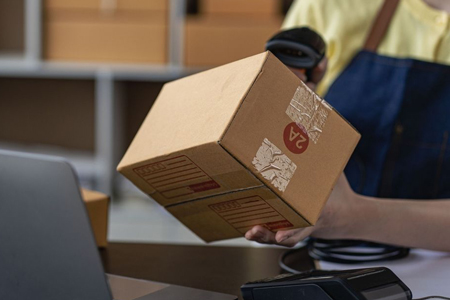
With the staying power of ever-present online retailers, the COVID customer impact, and the appearance of unprecedented supply chain disruptions, customers are demanding quicker and more accurate fulfillment options from traditional retail brands to compete with the much-publicized two-day, one-day, and now more widely prevalent same-day delivery options. As the likes of Amazon, Target, Walmart, and other retail giants implement newer and quicker delivery capabilities—seemingly on a daily basis—other retailers are scrambling to find ways to capitalize on the consumer desire for instant fulfillment gratification.
One of these fulfillment options is typically referred to as ‘buy online pick up in store’ (and more commonly called ‘BOPIS’ and/or sometimes ‘click and collect’),. BOPIS allows a customer to have their product in-hand the same or the following day. In a perfect world, the BOPIS capability allows a customer to shop online with visibility into a store’s actual inventory, reserve the item from that inventory with an online order, and pick up their order in the store on the same day it was placed.
Certainly driven by the 2020 global pandemic, many retailers have implemented curbside pickup so that the customer does not even have to leave the comfort of their car. For the purpose of this point of view, we will concentrate on BOPIS with the typical in-store order pickup process and the benefits that it presents to both the customer and the retailer.
BOPIS and The New World of Retail
The shopping world has permanently changed. Not very long ago, it seemed like the entire world was out shopping from Thanksgiving throughout the holidays with ‘Black Friday’ and the day before a specific holiday being absolute chaos. With extremely crowded stores, malls, and shopping centers, a fair amount of patience was required from shoppers circling the parking lot pursuing the elusive open space or waiting in seemingly endless checkout lines. Granted, some consumers eagerly anticipate the holiday shopping season, love the associated mayhem, and truly enjoy the ‘thrill of the hunt’ for the perfect gifts. But this is not the case for everyone—especially with our progressively time-strapped lives and heightened awareness of safety concerns.
There was never a guarantee that shoppers would get exactly what was desired or needed because their shopping success was at the mercy of the local stores’ assortments and inventories.
During these shopping frenzies (and during calmer periods), consumers use different senses to determine the quality of products, which in turn provides confidence in the items they purchase. In the days before online retail was widespread, there was never a guarantee that shoppers would get exactly what was desired or needed because their shopping success was at the mercy of the local stores’ assortments and inventories. Even if a store had the ability to get additional stock, it could be days or even weeks before a desired item would be replenished.
Now, consumers expect retailers to have capabilities that support easy online browsing and buying without ever entering a store. Moreover, advanced e-commerce/digital and mobile capabilities, higher quality product images, better product data and attribution (in some cases), the prevalence of customer reviews, and other features make online shopping a necessary component of any retail strategy.
One of the major selling points of the online experience is that in many cases shoppers can get their items within a two-day delivery timeframe—often for free or nominal shipping cost. This shift in the shopping experience has forced typical store retailers to change their strategy for attracting customers. They are compelled to find new ways to get customers into their stores or risk losing a large segment of their sales. BOPIS is one strategy to reduce this gap with online retailers. BOPIS elevates the retailer above other competitors that do not offer the service. In fact, according to one study, 37% of shoppers regularly use this service, with 9% using BOPIS every day.
Customer Benefits of BOPIS
With the expected quick turnaround for purchases, customers increasingly have an “I want it now” mindset when it comes to shopping. A retailer’s BOPIS process helps a customer achieve that goal and more: online reservations, quicker pickups, product validation, and easier returns.
Shopping Convenience
A customer can always browse online for the retailer’s goods at their leisure, whether they are at home or on the road somewhere filling time. The method of browsing is the same whether the customer is looking into using BOPIS or just placing an online order for regular delivery. With the ubiquity of online shopping, it is obvious that retailers who do not provide seamless and efficient online ordering lose customer interest quickly, which leads to lost sales and often, customer abandonment. Adding the convenience of not only placing the order online, but also the option of picking it up the same day provides clear benefit to the customer.
Instant Gratification
A BOPIS order technically allows the customer to get their items quicker than typical online retail transactions because the customer is able to place their BOPIS order and then get notified when the order is ready for pickup, which is typically the same day or the following day (if ordered late in the day). Despite the advent of newer delivery innovations, most online retailers rely on traditional shipping methods to get products to the customer. As such, there is typically at least a one-day delay until an online order is received by the customer. BOPIS helps fill in that gap and gives customers the ability to get their items the same day the order was placed. While indeed, the customer has to drive to the store, they have confidence of receiving the items almost immediately, and therefore, most do not mind the slight inconvenience of visiting their local store. Another benefit associated with this option—and in the same manner as retailers who offer complimentary ‘ship-to-store’ fulfillment options—there is no direct shipping cost to the customer (outside of the personal travel expense).
In the case where a particular item may not be available at the customer’s closest store, most retailers have introduced the capability of showing other nearby stores where the product can be picked up that day. Many consumers are willing to drive a bit farther if the urgency is great enough.
Product Validation
One of the biggest concerns of utilizing online retailers is the customer cannot physically see and touch an item to determine the level of quality, whether it is the desired color, and/or if the size is appropriate for the customer’s needs. With a BOPIS order, the customer has the freedom to cancel the order if they get to the store and discover the item does not meet their expectations.
Convenient Returns
Product returns can create issues for ‘pure play’ online retailers (those with no physical stores). In these cases, the returned item must be shipped back to the retailer, which can cause customer frustration. Most sophisticated online retailers that do have physical stores allow items bought online to be returned in-store to avoid shipping hassles. Many pure plays include packaging and labels to make shipping return items easier. Further, partnerships like Amazon’s with Kohl’s to process customer returns aim to alleviate some customer onus in the returns handling. But with a BOPIS process in place, customers typically have the option of returning the item to any store at any time within the retailer’s return policy window without worrying about RMAs, re-packing, and other shipping logistics. Arguably, on the retailer side, processes must be in place to handle return items that may not be in the return store’s assortment to ensure inventory accuracy and visibility are kept intact. However, this is another opportunity to gain valuable foot traffic and introduce the customer to new items, services, or other brand attributes—we will talk about this a bit more in the next section.
Retailer Benefits of BOPIS
Not only does BOPIS provide customer satisfaction (when executed well), but it also benefits the retailer in multiple ways that become the main drivers for pursuing and perfecting BOPIS capabilities. Most of these outcomes have to do with top line revenue impacts: increased online orders, incremental in-store traffic, additional marketing avenues, and compelling the retailer to improve their inventory accuracy processes and systems.
Increased Online Orders
By giving the BOPIS option, the retailer can fulfill the customer’s need for immediate gratification. Without that option, the customer may look at some items online, but they may not complete the transaction due to long lead-times for delivery or they may go to another website to see if they can get the same or similar product quicker or cheaper, which often leads to lost sales.
Incremental In-Store Traffic
A retailer’s key goal is to sell products, and properly implemented BOPIS processes can actually do more than just secure the sale. Since the customer has to pick up the item in the store, the BOPIS order naturally leads to increased store traffic. This creates the opportunity to generate add-on sales to the original BOPIS order because most customers will peruse the store once they are inside. A well-trained store staff can capitalize on this incremental traffic to provide exemplary customer service, further enhance the customer experience, and boost loyalty—which typically translates to higher sales.
Additional Marketing
If merely walking into the store is not enough temptation for the customer to buy additional items, then the retailer can offer promotions or other incentives for in-store purchases when the BOPIS order is placed to help guide the customer towards items for which they may not initially have been shopping. These offers do not have to be for specific items, and in fact, they are likely more effective at getting customers to peruse the store at item pickup time if they are just a general percentage off an in-store purchase. This presents a new avenue for marketing campaigns and can also serve to educate the customer about new items in the retailer’s assortment or array of services offered. These add-on sales are typically one of the main reasons that retailers pursue BOPIS.
‘Forced’ Inventory Accuracy
One of the other key benefits reaped from a BOPIS implementation is the inventory accuracy gained through systemic integration and supporting business processes that enable accuracy. In order for BOPIS to work, the relevant systems must constantly communicate with each other—primarily those handling inventory, such as assortment planning, item planning, replenishment, allocation, and store systems. An inventory batch update overnight is no longer a realistic integration strategy.
Further, while master data must be integrated and consistent across all internal and customer-facing systems before BOPIS can be implemented—undeniably, the most important data shared across systems during BOPIS transactions is inventory. The retailer must have processes in place to ensure that physical inventory levels are correct at the time of the BOPIS solution implementation and also have a way to audit inventory levels constantly to validate that the ongoing inventory information is accurate. Incorrect store inventory information is catastrophic for the BOPIS process. It will either prevent order creation by making the customer think the item is not in stock, or the customer will complete the online transaction only to have it subsequently canceled by the order management system (or store staff) because the website inventory was incorrectly representing the actual store inventory. With a well-designed inventory flow created or updated as part of a BOPIS implementation, the retailer is innately improving their inventory accuracy across the enterprise. Enhanced systems that enable BOPIS status reporting can help provide an easy way to monitor these inventory levels.
BOPIS Implementation Considerations
It would be remiss to discuss the benefits of implementing or enhancing BOPIS capabilities without at least mentioning some of the considerations and roadblocks.
Customer Satisfaction
The first concern that always comes to mind is customer satisfaction. There is a bit of unrest in having faith that the items selected by the store associate fulfilling the order will meet a customer’s expectations. This concern is most typically associated with the grocery sector, where selection of perishable items is the responsibility of the order picker—as opposed to a typical manufactured item. This concern can be rebuked if the retailer is focused on customer satisfaction through the BOPIS process, and the company ensures store associates are trained and incentivized to follow the same mindset.
One approach would be to compel the associates to pick the items that they would feel comfortable buying themselves, as well as ensuring customer expectations are met or exceeded through follow-up satisfaction surveys—then adjusting the process or re-training associates, as needed. Having a ‘satisfaction guaranteed’ policy that is well-advertised and appropriately compensated (in the case of errors) is another way to ensure customer acceptance and use.
Although store associates are often on tight time frames to pick orders, they also need to remember the priority of overall customer service. If a customer in the store needs assistance unrelated to the associate’s BOPIS order, then the associate needs to be trained to pause their current pick task and help the in-store customer. For larger stores with many associates, it may be possible to separate responsibilities, but there will always be scenarios that must be addressed in training where in-store customers approach the pickers.
Store and Staff Measurements
Because the roles and responsibilities of the entire store staff are typically disrupted a fair amount with the introduction or expansion of BOPIS, retailers also need to think through and adjust key performance indicators (KPIs) of both the overall store as well as individual roles within the store. The question of ‘who gets credit’ for BOPIS orders is a common issue—especially when returns are factored in. Since BOPIS orders do require store associate involvement, most retailers with BOPIS capabilities in place attribute the revenue to the store fulfilling the order.
BOPIS Order Staging
When the customer comes into the store to pick up their order, they are typically expecting efficiency (hence a primary reason for using BOPIS); therefore, the store associate needs to know exactly where the picked order is located. This demands not only dedicated space for storing the picked items, but also a simple methodology for locating customer orders, as well as adequate staging or packaging for easy transfer to the customer. Granted, in smaller stores, dedicating a section of the back room can be challenging, and it may be necessary to allocate precious sales floor space for this capability, which then raises questions around the ROI of BOPIS vs. selling space.
Customer Communication
There is also the issue of handling BOPIS orders that may not get picked up immediately, such as communications to the customer if an order remains in the store after a certain time period (i.e., not picked up within three days, as expected). This again, goes back to roles and responsibilities of the store staff—as well as systemic integration—to determine how the customer is contacted (automatically by a system email, or a phone call from a store associate). This may be a blend, depending on the brand’s customer service value proposition (i.e., highly personalized/consultative vs. big box/self-service environments).
Further, an efficient BOPIS process requires several customer touchpoints where emails are sent to the customer with updates (e.g. order confirmation, order ready for pickup, order picked up, order canceled, order reminders, order auto-canceled, item canceled). Depending on the existing systems, there may be a separate order management application required to handle all the email triggers and content.
System Integration
In a related sense, other retail legacy systems may have to be updated or integrated to handle the new BOPIS order process, which needs to flow from the website to the order management system to the point of sale (POS) system—all while integrating to systems supporting inventory management. Unless the retailer has already implemented some ship-to-store orders, their POS system may not be configured to handle incoming customer orders.
Inventory Management
Another related concern is regarding inventory tracking. Oftentimes, different systems are not fully integrated with real-time inventory updates. This goes back to the inventory accuracy benefit mentioned earlier and is the biggest design element for BOPIS due to the multiple systems involved in triggering inventory updates throughout the process. Additionally, store associates must be fully trained, understand, and execute the proper procedures to trigger the different types of inventory updates (e.g. pick, sort, pickup, and manual adjustments).
BOPIS Product Assortment
A key BOPIS implementation consideration is the appropriate assortment to be made available. Not every item in a retailer’s in-store assortment is suitable for this process. Most retailers do not have their full assortment available for BOPIS. The typical cadence is to start off implementing 20% or less of the available SKUs and then gradually build the BOPIS-eligible inventory over time as the process is honed. Further, retailers may need to define safety stock differently for the BOPIS assortment to ensure these items do not go out of stock—a design element heavily dependent on the retailer’s replenishment capabilities. Typically, a retailer will start with an assortment of BOPIS items that are stocked in all store locations, are early in the item lifecycle (not marked down or discounted), and are not seasonal items. Over time, the retailer may expand their BOPIS assortment to include a wider range of items and scenarios, but initially, it is better to have a common assortment and process across all BOPIS items in all stores.
Pricing Alignment
Of course, there must be consistency across the customer’s BOPIS order and in-store pricing—including any current promotions. This is tightly related to the systemic integration concerns mentioned, but also has touchpoints to marketing. In the occasions where prices are not consistent, store associates must be aware of any discrepancies and be empowered to make appropriate adjustments, such as issuing a credit or other reparation to the customer (in cases where the online price is higher).
Fraud
There is also a level of concern about fraud. Like ‘traditional’ online orders that are shipped to a customer, there should be a systemic process in place to perform fraud checks (e.g. match credit card with shipping addresses, perform email blacklist checks). In addition to the initial fraud checks, retailers need to have deliberate processes in place to identify the customer at pickup, such as requiring photo identification, order confirmation, and/or credit card used in the transaction. Communicating these requirements to the customer during the ordering and confirmation phases of the process will mitigate uncomfortable situations at the store.
As with most initiatives, proper planning, communication, and training during the BOPIS solution implementation can address many of these concerns. As such, one of the best ways to prevent in-store process hiccups is to ensure a well-designed order management process and fully trained staff are in place. Further, a change management program will greatly improve store associates’ understanding and adoption of new BOPIS-related procedures. Because store staff responsibilities will very likely be altered, change management activities not only help inform and educate store associates about the upcoming changes but also provide the chance to voice concerns about the new process that may need to be addressed before it can work efficiently.
Final Word
When executed well and consistently, BOPIS brings many benefits to both the customer as well as the retailer. However, as with any customer-facing program, BOPIS is only as good as its design, implementation, and execution. This entails a variety of updated business processes supported by integrated systems, inventory management procedures, and a solid master data strategy, along with proper training and a change management plan for store associates and other customer-facing employees. While the customer enjoys the immediate benefit of getting their desired items quickly and conveniently, the retailer is positioned to receive substantial measurable benefits, including additional in-store traffic and the coveted revenue lift. Not only does a well-executed BOPIS process enable these impacts, but it can also strengthen customer loyalty and ultimately benefit the retailer’s bottom line.
You may also like





